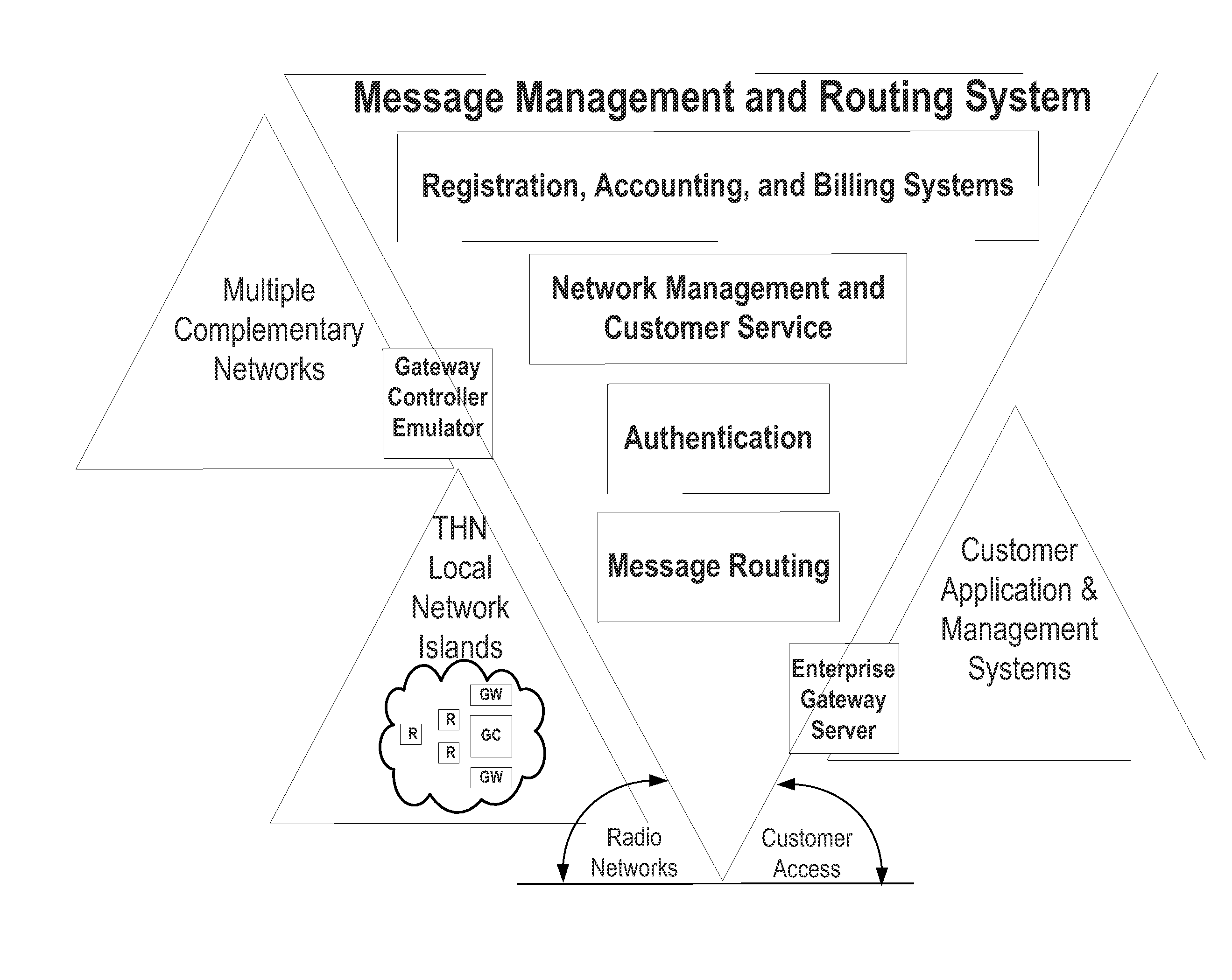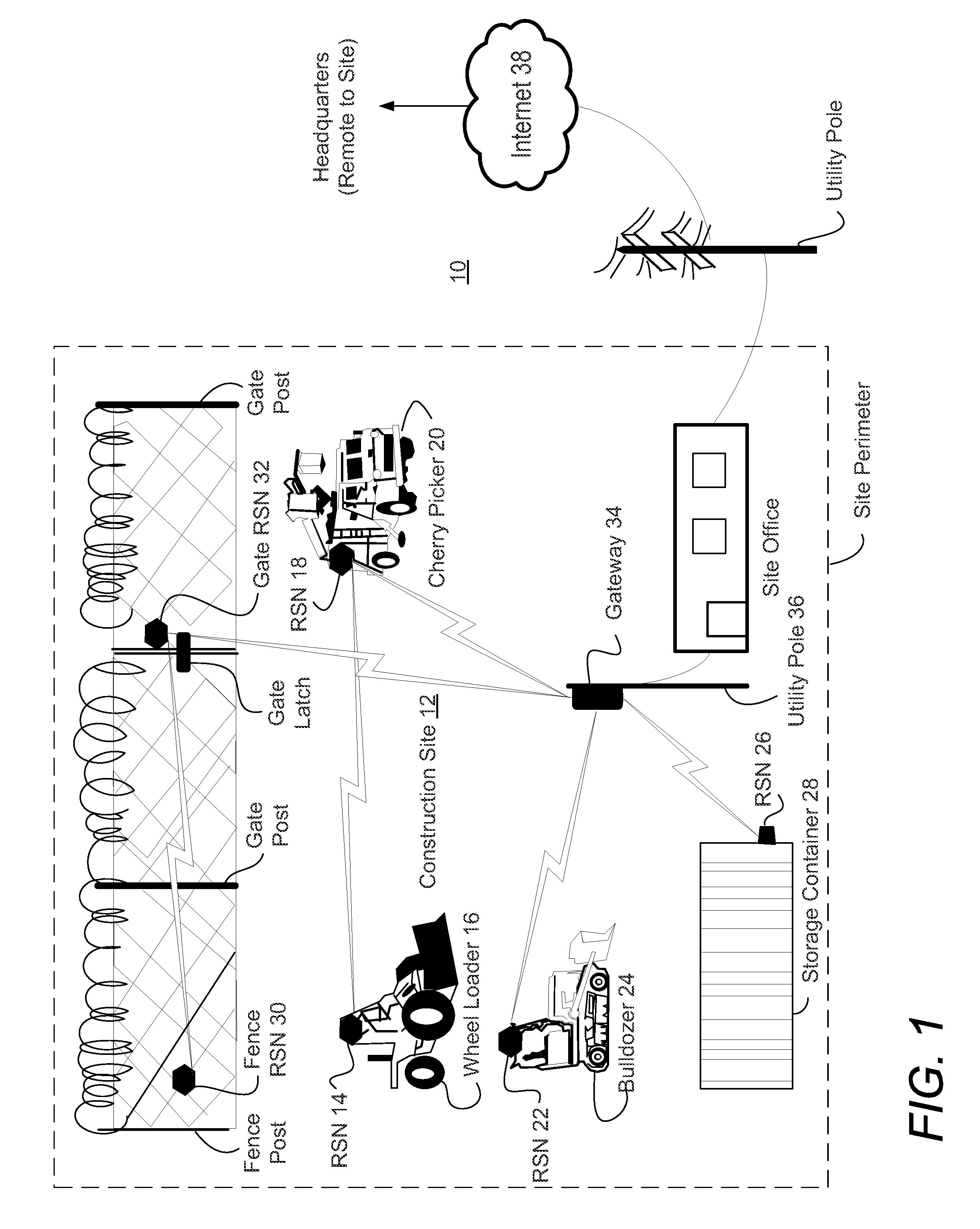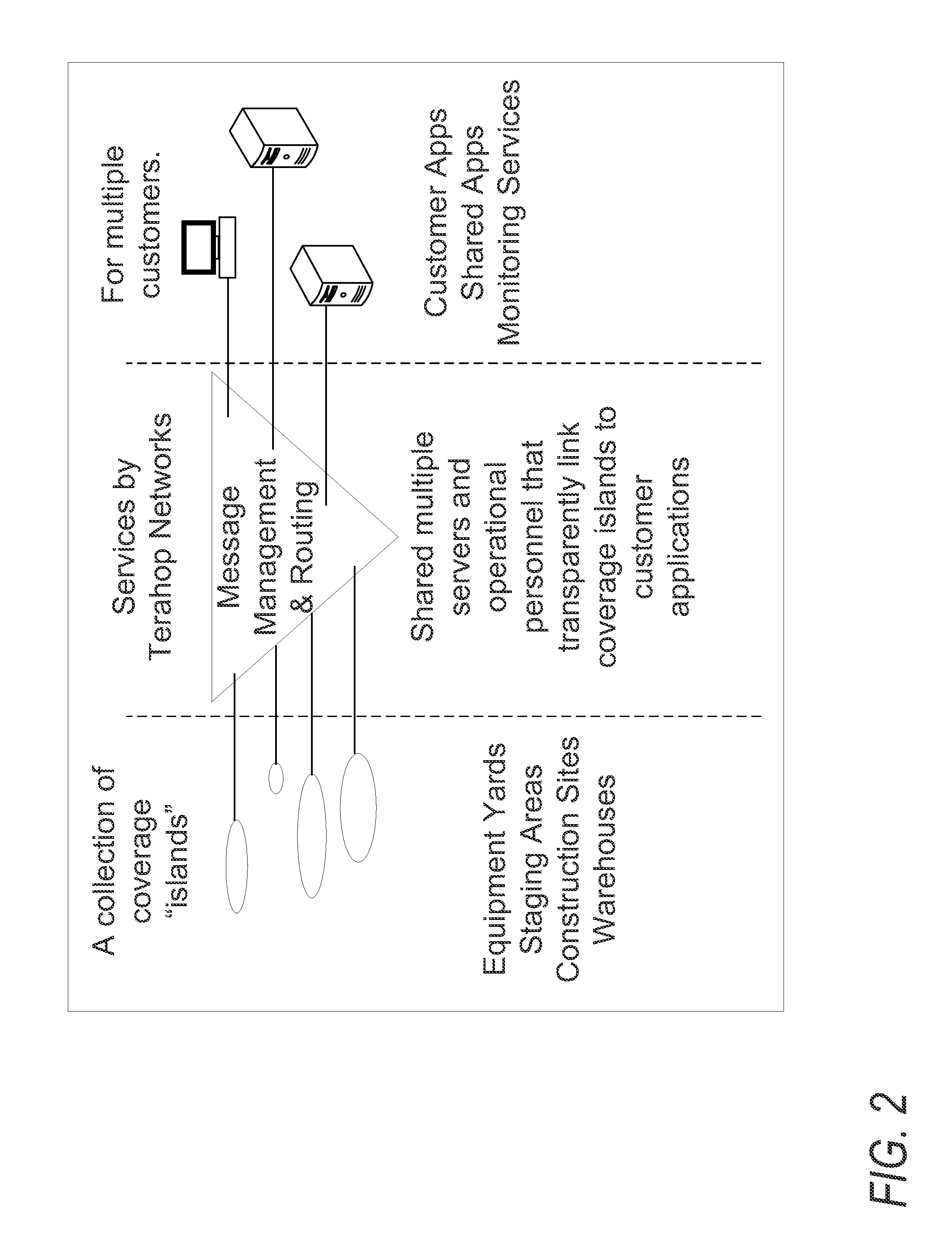Both of these technologies have limitations.
Consequently, much infrastructure is required, which is usually cost-prohibitive, and it can be inconvenient and disruptive to get tags and readers close.
Also, depending on the site itself, the structures and
AC power to support the infrastructure may not be readily available, which may be a major consideration, such as at a new construction site.
In addition, RFID tags typically have little or no memory; so, unless a tag is in proximity of a reader at the time of an event, an event may not be recorded and may go unrecognized.
RFID-based systems may lack the ability to interface with external sensors, such as engine run-time monitors.
However, many of the other limitations in
traditional use of RFID tags, such as power requirements, memory, infrastructure installation fussiness, and external sensor interfaces, are not well addressed with this technology.
Thus, with respect to traditional
wireless asset-management solutions utilizing RFID tags, events must take place near a sensor reader in order to be reported at the time and location they take place; the limited range of sensors requires more infrastructure to get sufficient sensor coverage; it can be
time consuming and expensive to set-up, configure, and maintain the network infrastructure; and on-board sensor memory is usually not available to capture all
event data, even events that occur after hours, including weekends and on holidays.
In contrast to the foregoing, GPS technology requires no local infrastructure and provides accurate location capability; however, the GPS devices and associated data-link services needed to make full use of this technology can be costly.
Those data links can be expensive.
GPS technology has a high power drain, requiring the devices to be mounted on or near a permanent power source or it requires the frequent change-out of batteries, increasing the
system maintenance requirements and potentially reducing the
system's reliability.
Also, the devices used for GPS are somewhat bulky and are usually mounted in an exposed area for adequate
satellite line-of-site.
This makes the devices susceptible to frequent damage and / or to deliberate disablement by thieves.
GPS technology is most effective with a clear line-of-site to satellites and, therefore, is not effective for equipment that may be located in storage facilities or hindered by other site structures.
Lastly, due to the complexity of the technology, installation of the GPS devices can be intricate, increasing system installation costs.
GPS-based systems, as well as other locating technologies such as LoJack, are often also limited to tracking an asset only after the absence has been noticed and recorded.
Since thieves know this, thefts usually occur over weekends, giving the thieves as much as 60 hours to escape before the theft is discovered on Monday
morning.
Thus, with respect to traditional
wireless asset-management solutions utilizing GPS technology, GPS devices mounted to the monitored assets require a clear line-of-site to satellites, which limits their operating area; GPS systems can be effective in finding assets after they have been stolen but do little to initiate alarms or notify authorities at the time the theft is taking place; GPS devices have a
high current drain requiring a
constant power supply or frequent change-out of batteries; the
large size and exposed mounting makes the hardware susceptible to frequent damage and / or disablement; data links for GPS back-haul communications can be expensive; and GPS devices themselves can be expensive.
 Login to view more
Login to view more  Login to view more
Login to view more 


